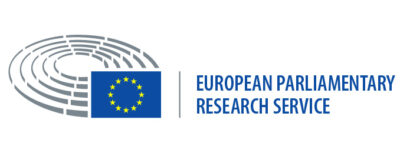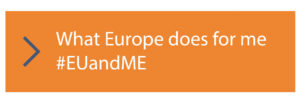Written by Ulla Jurviste and Anna Stull
In 1999, the European Commission issued the communication “Women and Science: mobilising women to enrich European research” , which aims to promote equal opportunities in research activities in the EU. This was the first step towards a gender equality policy in the field. Since then, progress has been and is being made. However, according to the EU’s recent analysis “She Figures: Gender in Research and Innovation 2012” , women remain under-represented in the EU research and science.
In its Resolution of 9 September 2015 on women’s careers in science and universities, and glass ceilings encountered, the European Parliament calls on the Commission and the Member States to address gender imbalances in the decision-making process and within the bodies responsible for hiring and promoting researchers, and to consider the creation of gender equality plans as a precondition for access to public funding in research, science and academia.
This Keysource brings together a selection of information materials to better understand the situation of women in science and research.
Overviews

What women need to succeed in science: attracting females to research careers – and keeping them there / Huda Y. Zoghbi and Paul Greengard, The Scientist, 1 February 2014 .
The authors reflect on how to help more women choose—and succeed in—science.
How to improve gender equality in science – Q&A with 2 STEM leaders / Isabel Kassabian and Christina zur Nedden, Elsevier, 14 January 2014.
Why are women needed to drive science? Should a job quota be introduced? What mistakes do women make? What are the hidden dangers of implicit bias?
Inequality quantified: Mind the gender gap / Helen Shen, Nature: International weekly journal of science, Vol. 495, 6 March 2013, pp. 22-24.
The author considers that despite improvements, female scientists continue to face discrimination, unequal pay and funding disparities.
Understanding current causes of women’s underrepresentation in science / Stephen J. Ceci and Wendi M. Williams, PNAS, 2011, vol. 108, no. 8, 3157-3162.
This article points out that society is engaged in the present in solving problems of the past, rather than in addressing meaningful limitations deterring women’s participation in science careers today.
Women in Science / UNESCO website
Women in Science / Horizon: The EU Research and Innovation magazine
Presents the latest news and features regarding women and science in the EU.
Science: it’s a girl thing! campaign
The European Commission has launched this campaign to encourage girls aged 13-18 to study science. It is rooted on the active participation of women scientists acting as role models.
AcademiaNet
European database of profiles of excellent female researchers from all disciplines. The portal has been established for those searching for suitable female candidates for influential academic and scientific positions.
Analysis
Gender Equality Policies in Public Research / Anke Lipinksi, DG for Research and Innovation, European Commission, 2014, 56 p.
This report is based on a survey among the members of the Helsinki Group, the Commission’s advisory group on gender, research and innovation. It gives a detailed analysis of the current state of play of EU Member States’ and associated countries’ initiatives for promoting gender equality in research and innovation.
National Measures for the Attractiveness of Science for Girls in Different Member States of the European Union and beyond / European Platform of Women Scientists (EPWS), August 2014, 63 p.
This study presents some initiatives aiming at improving the attractiveness of science for girls or for the pool of girls possibly interested in science and technology in secondary education or in the first years of higher education.
European Research Area (ERA) Progress Report 2014 (Section 2.4: “Gender Equality and Gender Mainstreaming in Research” ) accompanied by Facts and Figures 2014 (Chapter “Gender” ) / DG for Research and Innovation, European Commission, 2014.
Vademecum on Gender Equality in Horizon 2020 / DG for Research and Innovation, European Commission, 2014, 11 p.
Provides practical guidance on the effective application of the new Gender Equality provisions. This means integrating Gender Equality issues at each stage of the research cycle: from programming through implementation, monitoring and program evaluation.
Women, Research and Universities: Excellence without Gender Bias / League of European Research Universities (LERU), July 2012, 32 p.
The paper focuses on women in academia because more women than men drop out of research careers, resulting in underrepresentation of women in leading positions, a loss of talent for society and a lack of diversity in the work place, each of which presents a potential threat to the search for excellence in research.
Meta-analysis of Gender and Science Research: Synthesis Report / DG for Research and Innovation, European Commission 2012, 229 p.
The purpose of this study was to collect and analyse research on horizontal and vertical gender segregation in science with a view to steering policymaking and to defining future research priorities in this field.
Recommendations for Action on the Gender Dimension in Science / GenSET project, 2010, 46 p.
The recommendations call for action in four priority areas of the gender dimension in science: science knowledge making, deployment of human capital, institutional practices and processes, and regulation and compliance with gender‐related processes and practices.
Stakeholder views
EU Institutions
Council of the EU
Council Conclusions on the ERA Progress Report 2014 , December 2014.
European Commission
Gender Equality Policy: Science With And For Society / Website of DG for Research and Innovation.
European Parliament
Resolution of 10 March 2015 on progress on equality between women and men in the EU in 2013
See Article 15: “calls on on the Commission and the Member States to implement proactive policies to encourage women to embrace careers in science and to promote, through information and awareness-raising campaigns in particular, entry by women into sectors traditionally viewed as ʽmaleʼ, notably the sciences and new technologies, with a view to benefiting fully from the human capital represented by European women”.
Legislative resolution of 21 November 2013 on the proposal for a regulation of the European Parliament and of the Council establishing Horizon 2020: The Framework Programme for Research and Innovation (2014-2020)
See Article 16 on “Gender equality”.
Resolution of 21 May 2008 on women and science
Parliamentary questions to the Commission
Science careers for women , 19 January 2015.
Women’s participation in science, technology, engineering and maths , 8 December 2014.
Women’s underrepresentation in science , 13 November 2013.
International organisations
Careers of Doctorate Holders: Analysis of Labour Market and Mobility Indicators / Laudeline Auriol, Max Misu and Rebecca A. Freeman, Organisation for economic co-operation and development (OECD), 2013, 62 p.
There has been a steady increase in the number of doctoral degrees being awarded across the OECD and the evidence points to a sustained labour market premium of doctorate holders relative to other highly qualified individuals in 2009, prior to the potential impact of the economic crisis. Women and younger doctoral graduates, however, fare relatively worse in terms of employment rates, but these results are less marked than for lower degree holders.
Science, Technology and Gender: An International Report / UNES CO, 2007, 192 p.
This report points out the needs to increase women’s participation in science and technology careers and enable sex-disaggregated data collection and research development.
NGO views
New Perspectives on Women Scientists Careers in Europe / EPWS, June 2014.
Contributions from the conference held in Paris on June 11th 2014. Topics discussed were: “Gender in the new European Framework Programme Horizon 2020” and “Up-skilling Women Scientists Careers – European and French perspectives”.
Gender in Research and Innovation from Eastern European Perspective / European Center for Women and Technology (ECWT), 12 February 2014, 11 p.
Presentation given by Sasha Bezuhanova, Chair of the ECWT High Level Advisory Committee.
Position Paper on the EU Framework Programme for Research and Innovation Horizon 2020 / EPWS, 26 March 2012, 4 p.
Statistics
Women and Science / UNESCO Institute for Statistics (UIS).
Collects cross-nationally comparable, gender-disaggregated statistics on Research and Experimental Development (R&D) for more than 200 countries and territories.
Special Eurobarometer 419: Public Perceptions of Science, Research and Innovation / European Commission, 2014, 159 p.
Data broken down by gender are available in this report.
Special Eurobarometer 401: Responsible Research and Innovation (RRI), Science and Technology / European Commission, 2013, 215 p.
Section VI: “Gender Issues and Science”, explores opinions about the role of gender in scientific research.
Science, technology and innovation in Europe / Eurostat, European Commission, 2013, 148 p.
Data broken down by gender are included in this publication.
Eurostat data on: Share of women researchers, by sectors of performance ; Share of women researchers (FTE): all sectors ; R & D Personnel ; Human resources in science and technology .
She Figures 2012: Gender in Research and Innovation – Statistics and Indicators / DG for Research and Innovation, European Commission, 2013, 159 p.
A key set of indicators that are essential to understand the situation of women in science and research in the EU.
EU programmes and projects
Horizon 2020: The EU Framework Programme for Research and Innovation (2014-2020)
This is the biggest EU research and innovation programme ever. Almost €80 billion of funding is available over seven years (2014 to 2020) – in addition to the private and national public investment that this money will attract. In Horizon 2020, gender is addressed as a cross-cutting issue in order to rectify imbalances between women and men as far as the implementation of projects is concerned, and to integrate a gender dimension in the research and innovation content.
Gendered Innovations project : Gender equality in Horizon 2020
Its goal is to provide scientists and engineers with practical methods for sex and gender analysis. It provides case studies as concrete illustrations of how sex and gender analysis leads to innovation. Gendered Innovations involves experts from across the U.S. and the EU Member States.
EU Prize for Women Innovators
The EU Prize for Women Innovators was launched in 2011 to give public recognition to outstanding women entrepreneurs who brought their innovative ideas to the market and to inspire other women to follow in their footsteps.








The FESTA consortium would like to draw your attention to the FESTA project and findings in the area of women in science.
We have interesting output that may be relevant for the work of the European Parliament on the topic.
Please do not hesitate to contact any of the project partners if you have questions or if you want to learn more.
Sincerely,
The FESTA team
info@festa-europa.eu
http://www.festa-europa.eu
You can read our reports under the link: FESTA documents.
FESTA has received funding from the European Union, Seventh Framework Programme, FP7-SCIENCE-IN-SOCIETY-2011-1, under grant agreement 287526.
[…] Read more analyses in the Infographic on Women and education in the EU and the overviews of Women in science and research and Education and training of […]
[…] Read more analyses in the Infographic on Women and education in the EU and the overviews of Women in science and research and Education and training of […]
[…] On Effortless Secrets In https://epthinktank.eu/2015/04/21/women-in-science-and-research/ One of the primary problems men face when using paid off dating sites to make sure you call […]
[…] of these dreams to get devoted wives and good moms for their future children. Essential Details In https://epthinktank.eu/2015/04/21/women-in-science-and-research/ – What’s […]
[…] For Simple https://epthinktank.eu/2015/04/21/women-in-science-and-research/ Plans It is essential for any lady to recognize which usually before a guy can easily accept love […]
[…] Hypnosis is just not designed to command your head and put you in a zombie like state, in order to bring about anyone to get rid of excess control from the actions. As you may have witnessed concerning many of the old television shows. Self-hypnosis may be a timeframe that may be often mystified, mis-understood, or simply finished complicated. It is at home with identify a trance like declare, however, in reality the majority of us enter and out of slight “trances” daily; these moments when our heads wander now we fantasize, once we center intently on something and block anything more out, or in cases where we “zone out” with front side while using the tv, or with a book. Standards For Elements For https://epthinktank.eu/2015/04/21/women-in-science-and-research/ […]
[…] – Speedy Systems For https://epthinktank.eu/2015/04/21/women-in-science-and-research/ The most significant criticism is the fact that these kind of women are found in the market for a […]
[…] A large number of Russian online dating sites agencies keep up a complex from privacy for any single profiles?n order that there exists no-one to tamper right from it and for any private data could also be confidential. Each profile is verified by these agencies since it usually happen to ensure that many people post fake profiles using false pictures. These are often observed as a mistake to lure western men and exhort money off their website. Some Russian girls whom visit internet websites are actually either solitary or divorced. Foreign men prefer Russian women as compared with traditional western women as they are thoughtful, loyal and family driven. Many pleasant words have already been explained about Russian brides in lots of articles or blog posts and books. Poets concentrated verse to Russian gems. And this may make the basic fact with their reputation among western men affordable. Step-By-Step Convenient Secrets For https://epthinktank.eu/2015/04/21/women-in-science-and-research/ […]
[…] Trouble-Free Plans For https://epthinktank.eu/2015/04/21/women-in-science-and-research/ Likewise the fourth important indisputable fact that you’ll want to know can be that Russian mail […]
[…] ukraine brides All those things humanity expects in marriage can be quite a efficient beautiful woman; one that that guy can trust and be contingent on for the rest of his life. They want your daily life spouse who’ll help to make their life beautiful. A friend or relative that will will make his burden of existence easier; who will figure out him moreover your partner’s vision, desires and hobbies and interests. Although no-one on this subject your life is excellent, a Russian bride is certainly incredibly all-around efficiency and marrying one can efficiency improve life and enter into it by means of happiness. When you get to educate yourself about and understand one other, she’ll program you within the hunt for ones goals and dreams and encourage you during tough times when you think that finally quitting. An Analysis Of Speedy Methods In https://epthinktank.eu/2015/04/21/women-in-science-and-research/ […]
[…] for you to definitely fulfill online women inside area and arrange some conference. Elements In https://epthinktank.eu/2015/04/21/women-in-science-and-research/ – A Closer […]
[…] Fundamental Criteria For https://epthinktank.eu/2015/04/21/women-in-science-and-research/ While it is true whois was possible “browse and buy” some decades ago, there are our […]
[…] /review/dreammarriage/ Truth be told that countless women place their profiles to take good thing about guys, who are researching meant for Russian women. The process from having a spouse is hard and emotional. So at this point everybody may cheat most people together with provide you with improper information your money can buy and for interesting. Here are some few tips on how to prevent scams the moment evaluating internet dating services with Russian women. Revealing Rudimentary Elements For https://epthinktank.eu/2015/04/21/women-in-science-and-research/ […]
[…] I call up this exercise, “Writing a Love Traditional to Myself. ” Basically, you can expect to do just precisely what it amounts to just. Get a linen of paper, and attempt with the academic journal or over the pc. Up coming, get busy writing your love notification to yourself and conveying each amazing elements you take pleasure in and adore about your self! You could think about physical features, personality characteristics, problems you own accomplished within your life, quite simply everything you enjoy about yourself. And don’t suppose you have to just target great things. You can even appreciate your self just by achieving this exercise! Step-By-Step Swift Secrets For https://epthinktank.eu/2015/04/21/women-in-science-and-research/ […]
[…] On Fast Products In https://epthinktank.eu/2015/04/21/women-in-science-and-research/ Further, as soon as you become a member of your website, you’ll be able to diagnostic their […]
[…] Sensible Systems In https://epthinktank.eu/2015/04/21/women-in-science-and-research/ Every woman has things this lady loves about her deal with and issues that this lady doesn’t. […]